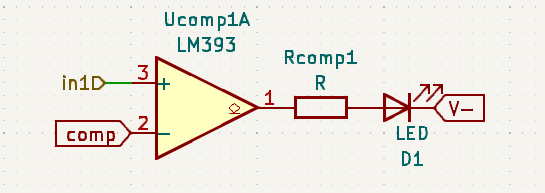There are so many approaches to this. It seems that what you are looking for is a red LED which will warn you when the level is close to (presumably audible) clipping. This is a common requirement, the usual approach to this is to have the LED common at either 3dB or 6dB below the maximum output level. The usual approach is to use a comparitor which charges an RC circuit (this effectively works as a monostable as suggested by others but is a bit simpler). Ideally you would want to detect either negative or positive peaks, but many designs economise a bit by only looking at one peak.
LM393 is indeed a comparator (probably how you got to it) but as audio opamps like NE5532 and TL074 are typically plentiful in a mixer, you can just as well use one of those as a comparator, and keep your parts count down a bit.

simulate this circuit – Schematic created using CircuitLab
It's usual for such a circuit to have a fairly fast attack time (here I set a time constant of 0.5ms) but (as very short periods of clipping are inaudible) not too fast, and a longer release time to make clipping on short peaks visible. I didn't work the values through thoroughly, and in any case you usually end up tweaking the values manually as the LED you choose will itself affect discharge time. It's not super critical, you just want to make sure you see the peaks.
The series diode and RC network should do this well enough for most applications. Note that you might prefer a 5532 over an 072 for this, as it have better current drive.



